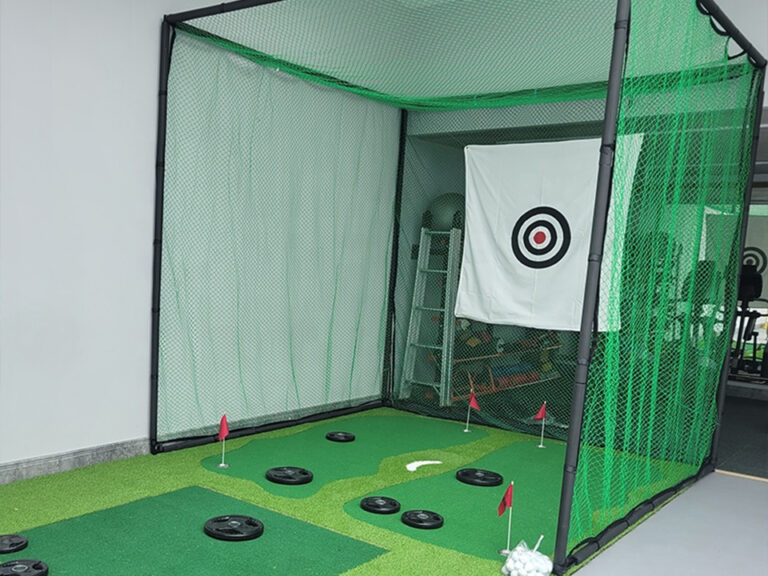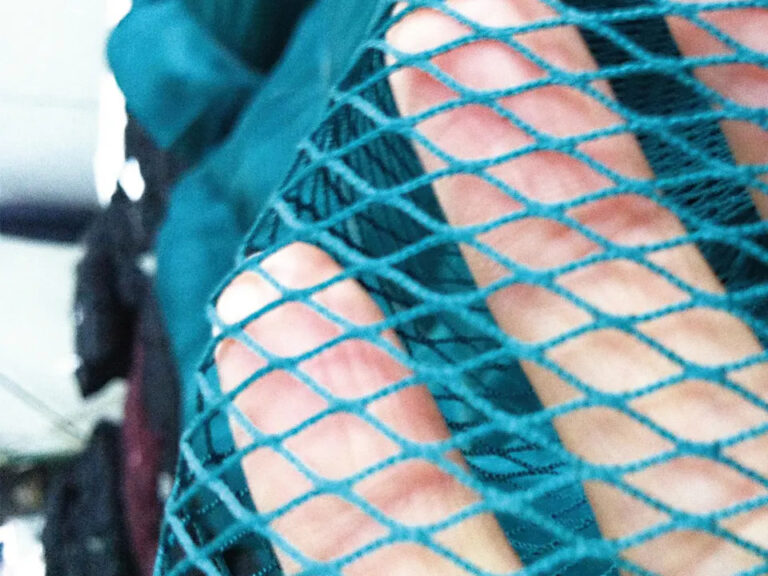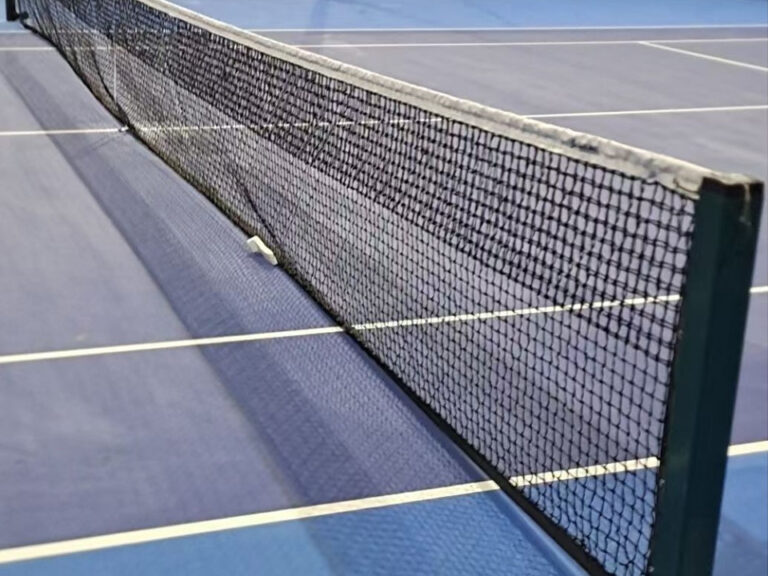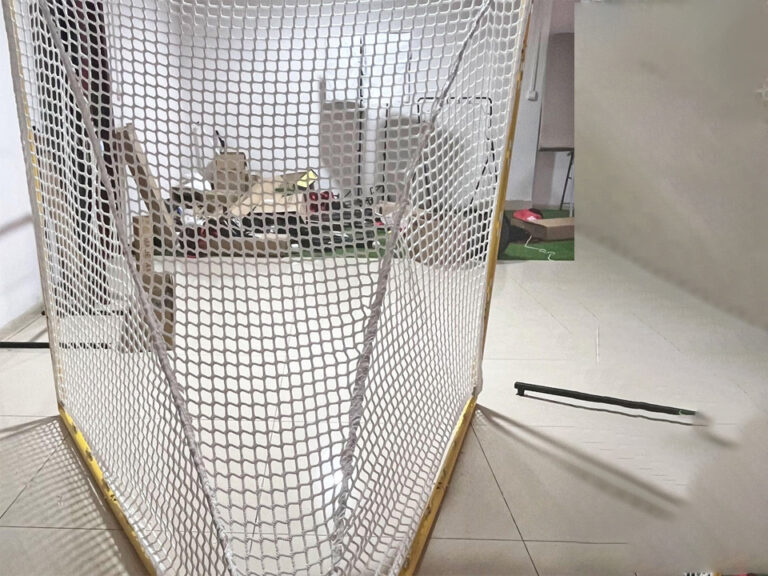Everything You Need to Know About Pickleball Nets
The pickleball net is an essential part of every match. It divides the sides, dictates the play, and has its own set of parameters and rules associated with it. Whether you need to know what size your pickleball net should be or the particular net nuances when playing a match, then this article is for you.
What are the Dimensions of a Pickleball Net?
A pickleball net is 36 inches high by 22 feet wide. In the middle, there is a 2-inch sag, making it 34 inches high in that spot. It is attached by two 24-inch-tall posts on either side. The net hangs over the center of the court, which is 44 feet long and 20 feet wide.
Pickleball Net Height vs. Tennis Net Height
In pickleball, the net height is 36 inches at the posts and 34 inches high in the middle. The sag in the middle is typical with all sports using a net.
In tennis, the net is 42 inches high at the posts and drops half a foot in the middle for 36 inches.
So, pickleball nets are lower all across, but most dramatically on the sides with a six-inch difference. In the middle, the difference is only two inches.
Pickleball Net Rules You Might Not Know
Pickleball nets have some particular rules you’ll need to know when playing your matches. Here are a few of the common and not-so-common ones to understand.
Can you cross the plane of the pickleball net?
The net plane is the imaginary line that extends through the posts indefinitely. Players are allowed to cross the plane of the net with their paddles (or anything else on their body) only after they’ve hit the ball. If any part of their body or belongings (hat, wallet, watch, glasses, etc.) extends past the net plane before making contact, then it is a fault, and you (and your team) lose the rally.
What if the ball hits the net?
Whether on a serve or during a rally, if the ball touches the net and lands on the opponents’ side in play, then the ball is considered live. If the ball lands out of bounds or on your own side, it’s a dead ball/fault, and your side loses the rally.
The pickleball net is an essential part of every match. It divides the sides, dictates the play, and has its own set of parameters and rules associated with it. Whether you need to know what size your pickleball net should be or the particular net nuances when playing a match, then this article is for you.
What are the Dimensions of a Pickleball Net?
A pickleball net is 36 inches high by 22 feet wide. In the middle, there is a 2-inch sag, making it 34 inches high in that spot. It is attached by two 24-inch-tall posts on either side. The net hangs over the center of the court, which is 44 feet long and 20 feet wide.
Pickleball Net Height vs. Tennis Net Height
In pickleball, the net height is 36 inches at the posts and 34 inches high in the middle. The sag in the middle is typical with all sports using a net.
In tennis, the net is 42 inches high at the posts and drops half a foot in the middle for 36 inches.
So, pickleball nets are lower all across, but most dramatically on the sides with a six-inch difference. In the middle, the difference is only two inches.
Pickleball Net Rules You Might Not Know
Pickleball nets have some particular rules you’ll need to know when playing your matches. Here are a few of the common and not-so-common ones to understand.
Can you cross the plane of the pickleball net?
The net plane is the imaginary line that extends through the posts indefinitely. Players are allowed to cross the plane of the net with their paddles (or anything else on their body) only after they’ve hit the ball. If any part of their body or belongings (hat, wallet, watch, glasses, etc.) extends past the net plane before making contact, then it is a fault, and you (and your team) lose the rally.
What if the ball hits the net?
Whether on a serve or during a rally, if the ball touches the net and lands on the opponents’ side in play, then the ball is considered live. If the ball lands out of bounds or on your own side, it’s a dead ball/fault, and your side loses the rally.
On the serve, if the ball glances the net but lands in the proper part of the court, then it is live and should be played. If the ball lands in the kitchen, out of bounds, or on your own side, it is a loss of serve. There are no “re-do” serves.
What if the ball hits the net post?
Net posts (or any parts of a net post, i.e., wheels, arms, etc.) are positioned out of bounds. Therefore, if the pickleball touches the net post or any of the parts, then it is considered a fault, and that player or team loses the rally.
Also, it is considered a fault if you touch the net post or any of the parts while the pickleball is in play.
The Best Portable Pickleball Net
We identified some of the best portable pickleball nets available on our blog. Portable nets are fantastic, and we highly recommend grabbing one if you’re serious about your pickleball game. They’re good in a pinch when you find yourself on a packed tennis court with no available nets or when you need to play a pickup game in a basement or driveway. Or if you just want to build your own court!
One of the best, perhaps the best, portable pickleball nets is this system from Pickleball Central.
The 3.0 Portable Pickleball Net System
The 3.0 net is excellent for indoor and outdoor use and offers a sturdy design and easy assembly. The wide post bases and center stabilizer ensures that the net does not tip or fall over. Its parts are also numbered, making it easy to set up and take apart in under 10 minutes.
Benefits include:
● Durable
● Stable
● Easy-to-assemble
● Balanced weight
● Affordable price
The Best Permanent Pickleball Net
Of course, if you need a permanent solution, we’ve got some options we believe are worth considering. A permanent net is a hefty investment, but if you have a court that needs a reliable and durable net system, then a permanent pickleball net makes sense.
Douglas Premier PPS-22SQ Heavy Duty Portable Pickleball Net System
Though it says this net is portable, players report that it appears and performs like a permanent net system. This is great news for those who are not able or willing to drill holes, pour concrete, or purchase a parcel of land big enough to build their court.
This net was developed and used at the 2018 USA Pickleball National Championships and is an excellent option for clubs or owners who have a tennis court available and are looking to offer a pickleball option or replacement.
Conclusion
Have more questions about pickleball nets or pickleball in general? Be sure to follow and subscribe to our blog. We’re updating it constantly to share the latest news and information, tips, and strategies for players of all skill levels.
You can also visit Fsports Pickleball net!





